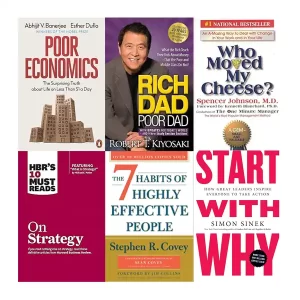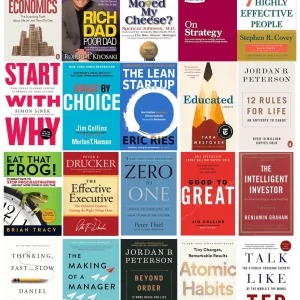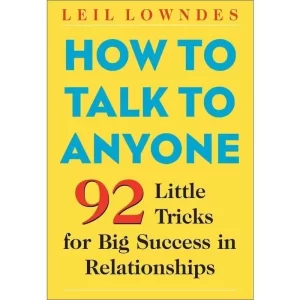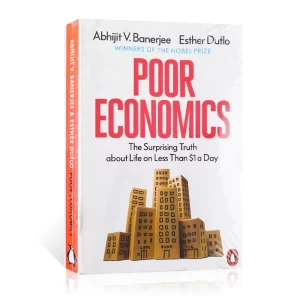Buy, Borrow, Die: The Ultimate Tax-Free Wealth Strategy! | Big Money Investing Review
Video Transcript
Welcome to Big Money Investing
Your Ultimate Destination for Learning From Big Money and How You Can Succeed Too!
Are you ready to take it to the next level?
Investing into sound investments like big money does. Subscribe to the Big Money Investing Channel
Buy, borrow, die. Heard of it before? In case you didn’t, it’s not just a statement. It’s a tax strategy, which by the way is one of the single most powerful tax strategies used by the wealthy to eliminate their tax bills. In today’s video, I’m going to help you master this concept. So, without further ado, let’s dive [Music] in. You may have heard that billionaires like Jeff Bezos, Elon Musk, and Donald Trump pay little to uh nothing in taxes. Well, it’s true and it’s not by accident. You see, for many people, their tax bills get higher as their income rises. But for people like the rich who know how to leverage the tax code to the fullest extent, making more money can actually open up more opportunities to reduce their tax bill. And this is where the buy, borrow, die strategy comes into play. What is the buy, borrow, die tax strategy? The buy, borrow, die tax strategy is a tax strategy that allows you to take advantage of the tax benefits of appreciating assets and debt in order to dramatically reduce your tax bill. Here’s how it works. Step number one, buy appreciating assets. Appreciating assets are assets that tend to rise in value over time. There are a wide variety of appreciating assets to choose from. For example, all of the following can qualify as an appreciating asset, such as stocks, real estate, precious metals, and much more. You can speak with an investment advisor if you need help on selecting highquality appreciating assets. But for many of the rich, they choose real estate. The great thing about appreciating assets is that they can help to substantially increase your net worth without generating additional taxes. This is because when it comes to appreciating assets, you do not owe capital gains taxes on the unrealized gains. And in fact, you will only owe capital gains taxes on the assets after you sell at profit. For example, if you have $100,000 worth of Apple stock and your position increases to a value of $200,000. You will only owe capital gains taxes on the $100,000 gain when you sell the Apple stock that you held. But one of the reasons why the top 1% are able to generate taxfree wealth and avoid high tax bills is because they take advantage of a concept of tax-free wealth building with appreciating assets. Because unrealized capital gains are non- tax, it is possible for billionaires to literally make billions of dollars in unrealized gains per year and not owe a single dollar of taxes on them. Many people focus on earned income such as income from a job or business. But the millionaires and billionaires understand that it is portfolio income that often provides the best tax breaks and benefits. And that is why they focus heavily on it. Portfolio income is income from investments. Step number two, borrow against the assets. Yes, you heard that right. Borrow against the assets. What do I mean by this? Take out loans or lines of credits and use assets as collateral. Carlton, why would I ever do that? That sounds crazy and unnecessary. Well, here’s why this step is so important. If you want to actually use the money that has accumulated by holding highly appreciated assets for long term, you have two choices. Option one is to sell the assets. Here’s why this isn’t a great option for the rich. When you sell the assets, you trigger a taxable event. This means that you will owe taxes on the profits that you make by selling the assets. Also, once the asset is sold, it stops appreciating in value, earning you unrealized capital gains. Option two is to borrow against the assets. To do this, you can go to a bank or a lender and offer your appreciated asset or a portion of your appreciated asset as collateral. As long as the banks think your collateral is high enough quality, it will issue a loan to you while controlling your collateral. So for example, let’s say that you go to the bank and offer a million of Amazon stock as collateral. In exchange, the bank may offer you a loan of around 70% of your stock collateral. So putting up a million in collateral, you could access a loan of 700,000. There are two main reasons why this matters from a tax perspective. First, loan proceeds are non-t taxable. This is because the government does not consider the capital that you receive as a loan to be the same thing as taxable income. So you will not owe capital gains taxes or income taxes on the loan proceeds. The second reason is because the collateral that you put up can continue to acrue unrealized capital gains even after the loan is issued. And this is because the collateral is not actually being sold. It is just being used to secure the loan and mitigate risk for the bank. To understand how significant this is, let’s dive deeper into the example I was just discussing. So, if you did not want to take out a loan, but still wanted to access $700,000 of cash from your 1 million in Amazon stock, you would sell it, right? This would leave you owing capital gains taxes on the $700,000 that you sold. You would probably have around $300,000 worth of Amazon stock left to appreciate. So, if the price of Amazon stock doubled in the next 2 years, your Amazon holdings would only be worth around $600,000. However, if you instead put your 1 million worth of Amazon stock as collateral to access a $700,000 loan, you could get access to the cash without owing any capital gains taxes on the loan proceeds. The Amazon stock, if it doubled in price over the next 2 years, your holdings would be worth $2 million. That is a $1.4 million difference from the first option. Are you starting to see why this strategy is powerful for the rich? Keep in mind, however, yes, loans do need to be repaid over time. So, while you might not be generating any taxes by borrowing against your assets, you will still need to gradually repay the loan over time. There are many different strategies to keep up with the loan payments. For example, some people choose to invest in assets that generate cash flow or dividends, and they use this cash flow to keep up with the loan payments. Others prefer to gradually sell capital assets as they appreciate, and others simply choose to pay the minimum payments on the loan using other income sources. There are a variety of ways to keep up with the loan payments. Remember, only a fraction of the loan has to be paid off each year. So, even if you borrow a large amount of money, such as a million dollars, that doesn’t mean that you’ll have to repay the full $1 million in one year. You can gradually repay the amount over many years. your collateral can continue to appreciate at the exact same time. You see, some people also refinance their loans periodically. Refinancing could potentially lead to lower monthly payments or a longer loan repayment period, both of which can be beneficial to the rich. The more that your assets appreciate over time, the easier the loan will be to repay. If you use your loan proceeds to invest in the cash flow producing assets like real estate, you may also be able to write off the loan interest, which can provide an additional tax benefit. When implemented correctly, real estate tax strategies such as real estate professional status, short-term rental strategy, self- rental strategy for real estate investors can help them use losses to offset W2 and 1099 income. And this can help to reduce taxable burdens even further. The tax benefits of borrowing against appreciating assets are so substantial that many of the richest business owners in the country actually only pay themselves salaries of a dollar or a similar amount. Then they fund their lifestyles by borrowing against the stocks that they own in their own businesses. It’s called the $1 CEO club. And this club has included the likes of Mark Zuckerberg, Jack Dorsey, CEO of Tesla, Elon Musk, Google co-founder Larry Page, and Sergi Brenn, and many others. But how do you actually borrow against your assets? There are a few different ways that you can borrow against your assets. For example, if you’re borrowing against real estate, you can simply do a home equity line of credit, a helock, which is pretty common in the real estate space. If you want to borrow against stocks or other securities, you can use a securitiesbacked line of credit, aka a SB lock. You can also use a portfolio loan or a margin loan. If you have a business, you can obtain a business line of credit or a secured loan. If you have a permanent life insurance policy with a cash value component, you may be able to borrow against this as well. Now, let’s move on to the final steps of the buy, borrow, die strategy. Step number three is die. Obviously, this isn’t the most fun part of the strategy, but until aging is completely cured, death is inevitable. So, if you’re going to die, you might as well do it in the most tax advantaged way possible. Am I right? With the buy, borrow, die strategy, your assets are passed to your heirs in a highly taxed advantaged way. And this is due to a tax provision called step up in basis. With step up in basis, the cost to basis of the assets is stepped up to the current fair market value of the time of your death. This prevents your heirs from owing capital gains taxes on all of the price appreciation that took place during the period that you owned the assets. So for example, if you purchased a rental property for half a million in 2005 and now it’s worth $2 million, the cost basis for your heirs would be 2 million if you passed on the property to them after your death, not the half a million you paid when you were living. This is called a step up in basis. It prevents owing capital gains taxes on the 1.5 million worth of appreciation that took place while you own the asset. If any money is still owed on the loans at the time of your death, death benefit proceeds can be used to pay off the loans. Then your heirs will inherit whatever assets remain. So as you can see with the buy, borrow die strategy, you literally hold appreciating assets and borrow against them until you die. then you can pass them on to your heirs in a highly tax advantageous way. Now, I’m going to get this question, Carlton. What about estate taxes? Is it true that if the estate being passed on is large enough that they could owe estate taxes? In 2025, the federal estate tax exemption is 13.99 million for single people, 27.98 million for married couples. So, most people will not have to worry about getting hit with federal estate taxes. But some states also have estate taxes. So, you could potentially get hit with state estate taxes. Making sure that makes sense. Be aware of that. However, even if your estate is large enough to be subject to estate taxes, it’s possible to use certain trust structures to mitigate estate tax liability, but that’s for another video. Thank you guys so much for joining me for this video. Now that we’re at the end of this video, I’m going to answer a question from one of my subscribers. This question was asked by Amarzi Benjamin on my how to turn everyday expenses into tax write-offs video. The question was, Carlton, what if I haven’t been documenting my expenses that are potential write-offs all year? Am I able to estimate my expenses in categories that are considered deductible? I do not like estimating things. And the reason why I don’t like estimating things is because the IRS doesn’t like estimating things either. In order to take a deduction, there are rules to follow. And part of the rules to follow is you have to document your expenses and keep verification of your expenses. If we fail to do the simple things right, then we are going to get penalized because of it. And unfortunately, if you have expenses going back to the beginning of the year, such as January, that are undocumented expenses and you don’t have proof of those expenses, it would be very hard to claim those expenses on your tax returns knowing that you don’t have verification that they were business purpose. So, I highly recommend to only claim expenses on your tax returns that you’re able to verify are business purpose. Guys, that puts us at the conclusion of this video. Here’s what I’d like you to do. Like, comment, subscribe. Let me know one thing that you learned about this video that was new for you. And if you can share this with one other person that is going to be building wealth this year. Thank you so much for watching. I look forward to seeing you on the next one. Cheers.Welcome to Big Money Investing – Your Ultimate Destination for In The Money Facts!
🌴 Discover the Big Money Investing Strategies on Metals and Real Estate Investing. 🌊
Experience the world of finance with Big Money Investing. We bring you the latest and greatest from Big Money Investors, showcasing the whys, how-to’s, and best practices. Whether you’re planning a short—or long-term investment, preparing is the first and most important step. The Big Money Investing channel is a great go-to investment advice source
🔥 What You Can Expect:
- Exclusive Financial and Big Money Investing How-To’s
- Big Money Financial Traits: Learn how to mix and match your perfect investment portfolio to match the planned-out time horizons.
- Financial Learning Is A Lifestyle Change: Stay financially fabulous with our expert investing tips, real estate practices, and healthy lifestyle advice.
- Behind-the-Scenes: Get a sneak peek into how the Big Money Investors spend some of that return, from photoshoots to interviews with the experts.
👙 Why Subscribe to Big Money Investing?
- Stay Updated: Be the first to know about new investment ideas and most importantly what not to be part of in today’s age.
- Inspired Goals Lend Motivation: Get inspired by our Big Money Investors’ vibrant and diverse lifestyles, a perfect view at times.
- Engaging Community: Join a community of financial enthusiasts and wealth producers who love to share their passion for life with others.
🔔 Subscribe Now: Hit the subscribe button and turn on notifications so you never miss an update from Big Money Investing. Join us on this fabulous journey and transform your financial situation with the latest trends and tips from Big Money Investing. Thank you for being a part of our amazing community.
#BigMoneyInvesting #big #money #investing #lifestyle #investors
Support Big Money Investing Sponsors
-
Book Sets, Books, How Big Money Investors Think About Money, How To Think Like A Big Money Millionaire
Big Money Financial Investment Management Book Set
$85.44 – $177.66Select options This product has multiple variants. The options may be chosen on the product pageQuick View -
Books, How To Think Like A Big Money Millionaire, Top Level Communication Skills
How to Talk to Anyone by Leil Lowndes 92 Little Tricks for Big Success in Relationships
Original price was: $18.24.$12.89Current price is: $12.89.Select options This product has multiple variants. The options may be chosen on the product pageQuick View -
Books, How To Think Like A Big Money Millionaire
Poor Economics By Abhijit V.Banerjee
Original price was: $18.09.$12.14Current price is: $12.14. -
Book Sets, Books, How Big Money Investors Think About Money, How To Think Like A Big Money Millionaire, Spiritual, Wealth Creation
7 Book Set – Master Your Time – Master Your Beliefs – Master Your Destiny – Master Your Thinking – Master Your Emotions – Master Your Motivation – Master Your Focus By Thibaut Meurisse
Original price was: $93.43.$67.33Current price is: $67.33.









